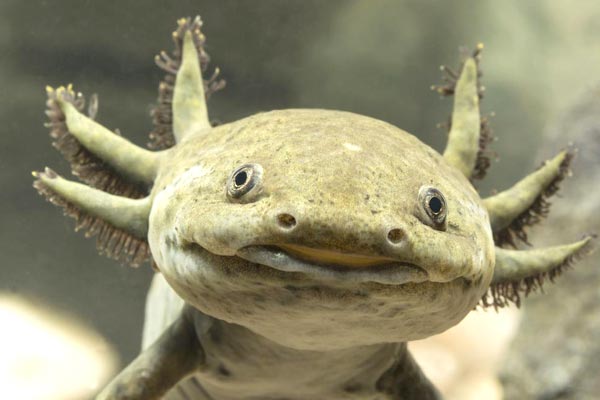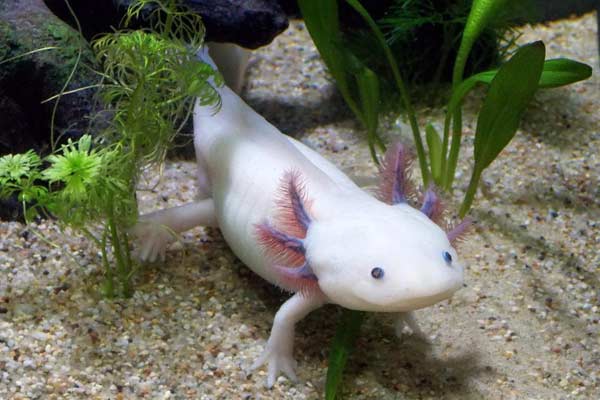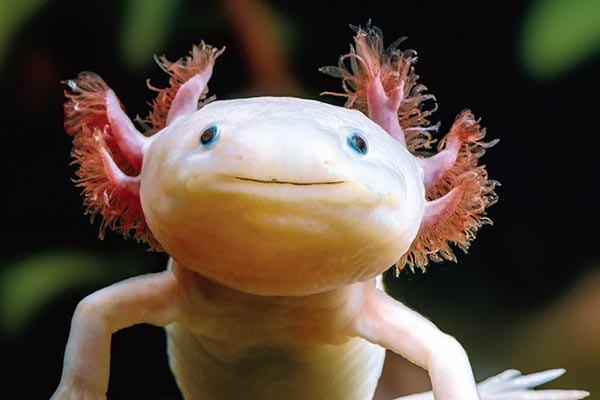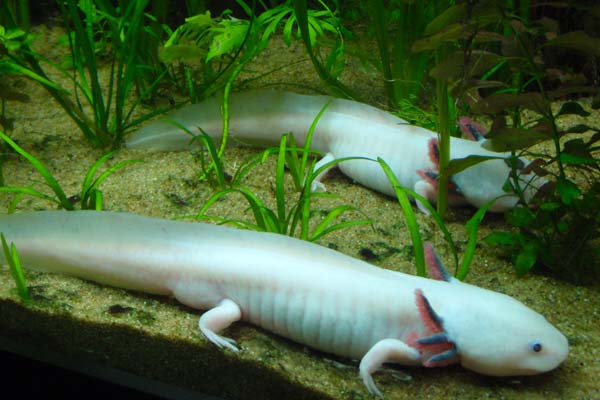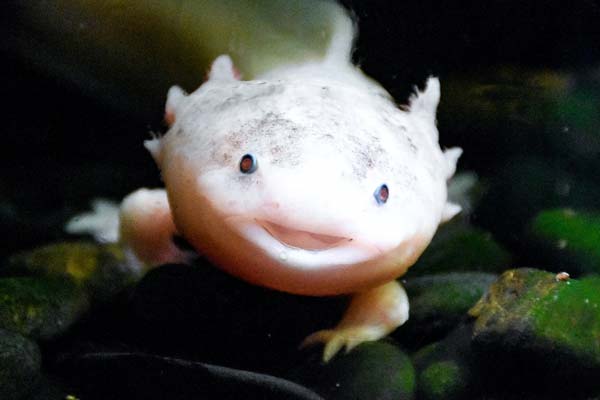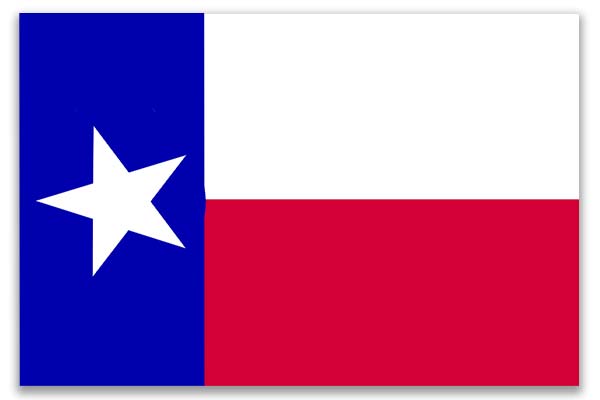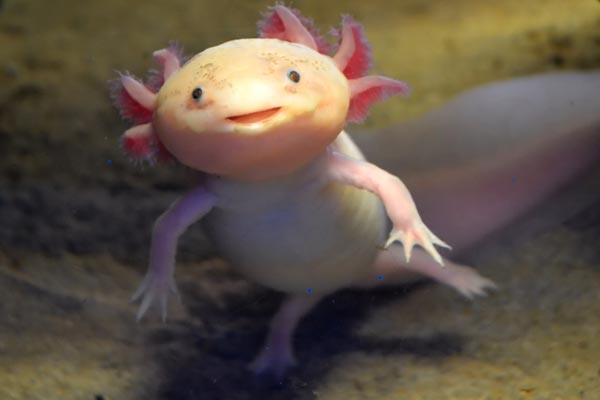How Many Pellets to Feed Axolotl: The Expert’s Guide to a Well-Fed Axolotl
Axolotls, captivating aquatic salamanders, thrive on a carnivorous diet of worms, shrimp, and fish. High-quality sinking pellets can be a suitable alternative.
Ensuring proper feeding is vital for their health and growth, as overfeeding leads to obesity, and underfeeding hinders growth.
Learn the correct pellet quantity for axolotls of various ages and sizes, and avoid common feeding mistakes to keep your axolotl healthy and happy.
Key Takeaways
- Axolotls are carnivorous and require a specific diet to thrive.
- Feeding them suitable pellets is vital for their health and growth.
- Guidelines for feeding pellets to axolotls vary depending on their age and size.
How Many Pellets to Feed Axolotl
The number of pellets to feed an axolotl depends on its size. As a general guideline, offer two to three pellets per day for every inch of their length. For instance, provide eight to 12 pellets daily if you have a four-inch axolotl. Additionally, for optimal nutrition, consider supplementing their diet with live or frozen foods like worms, brine shrimp, or bloodworms.
For every feeding, an axolotl should only be given as many pellets as they can consume in 1-3 minutes. Older adult axolotls can consume an entire earthworm in this period, while younger axolotls will consume much less. It is important to note that juvenile axolotls require more frequent feedings than adult axolotls due to their faster metabolism.
The size of the pellets should also be considered when feeding an axolotl. As axolotls are primarily carnivorous and accustomed to eating soft prey, providing them with a softer pellet that is easier to grab and swallow is vital. The pellet size should also be appropriate for the size of the axolotl.
Axolotls should be fed various foods to ensure they receive proper nutrition. In addition to pellets, they can be provided live foods such as earthworms, daphnia, bloodworms, and brine shrimp.
Frozen foods such as salmon pellets can also be given as a supplement to their diet. It is essential to avoid overfeeding as this can lead to obesity, impaction, and poor digestion.
The frequency of feedings should also be considered. Baby axolotls require more frequent feedings than adult axolotls. A one-year-old should be fed once a day, while adult axolotls can be fed every other day.
It is essential to clean any uneaten food from the tank to avoid ammonia buildup and maintain a clean environment for the axolotl.
Types of Pellets for Axolotls
Axolotls are primarily carnivorous and require a diet rich in protein and other essential nutrients. While live food such as earthworms, daphnia, and bloodworms are ideal for their diet, pellets are a convenient alternative that can be used to supplement their feedings.
Here are some types of pellets that are suitable for axolotls:
Sinking fish pellets: These pellets are a hit with axolotl owners since they sink to the tank’s bottom, making them a breeze for axolotls to spot and gobble up. They are available in various sizes and brands, and some high-quality brands include Hikari and Omega One.
Salamander and newt pellets: These are formulated explicitly for salamanders and newts and are an excellent source of protein and other essential nutrients. Some of the popular brands include Zoo Med and Tetra.
Salmon pellets: Crafted from salmon, these nourishing pellets serve as a remarkable source of protein and omega-3 fatty acids for axolotls. They are available in both sinking and floating varieties and can be used to supplement the axolotls’ diet.
When choosing pellets for axolotls, selecting high-quality brands free from preservatives and artificial colors is essential. It is also important to vary their diet by offering a variety of foods such as live food, frozen foods, and meat-based pellets.
Axolotls have a slow metabolism and can easily become obese if overfed. Generally, feeding adult axolotls 3-5 pellets per day is recommended, while juvenile axolotls should be fed twice daily. Baby axolotls should be fed live food, such as brine shrimp or mosquito larvae, until one year old and can transition to pellets.
Keeping an eye on the tank’s water quality is crucial, as leftover food can spike ammonia levels, posing a threat to the well-being of axolotls. The pH and temperature of the water should also be maintained within the appropriate range for axolotls.
Tips for Feeding Axolotls Pellets
Axolotls are primarily carnivorous but can be fed pellets as part of their diet. Here are some tips for feeding axolotls pellets:
Introduce pellets gradually: When introducing pellets to your axolotl’s diet, start with a small amount and gradually increase the quantity over time. This will help your axolotl adjust to the new food and prevent digestive issues.
Monitor your axolotl’s appetite: Monitor your axolotl’s needs and adjust the pellet quantity accordingly. If your axolotl is not eating all the pellets, decrease the amount. Increase the quantity if your axolotl is still hungry after eating all the pellets.
Provide a varied diet: Pellets should not be the only food in your axolotl’s diet. It is crucial to provide a variety of live and frozen foods, such as worms, brine shrimp, and bloodworms, to ensure your axolotl is getting all the necessary nutrients.
Feed according to size: A good rule of thumb is to offer two to three pellets per day for every inch of your axolotl’s length. For example, if you have a four-inch axolotl, you would give them eight to 12 pellets each day.
Avoid overfeeding: Watch out for overfeeding, as it can cause your axolotl to become overweight and have tummy troubles. Make sure you give them just the right amount of food for their size, and keep an eye on how much they eat.
Keep the tank clean: Uneaten food can lead to water quality issues, such as increased ammonia levels. Remove any uneaten pellets from the tank after feeding to prevent this.
Use forceps for feeding: Axolotls have poor eyesight and may not see pellets on the substrate. Use forceps to place the pellets before your axolotl’s mouth to ensure they eat.
Consider the age of your axolotl: Juvenile axolotls require more protein and nutrients than adult axolotls. Baby axolotls should be fed small amounts of meat-based foods, such as crickets, mosquito larvae, and pellets.
Transition slowly: If you transition your axolotl from live food to pellets, do it gradually over time. Start by offering a mix of live and pellet food, gradually increasing the quantity while decreasing the live food.
Common Mistakes to Avoid
Feeding an axolotl can be a tricky task, especially for beginners. Certain mistakes should be avoided while feeding them to ensure their health and longevity. Here are some common mistakes to avoid while feeding axolotls:
Overfeeding
Overfeeding is one of the most common mistakes that axolotl owners make. Feeding them just enough is important because overfeeding can make them too chubby, cause tummy issues, and even be life-threatening. Adult axolotls should be fed once every two or three days, while juvenile axolotls should be fed once a day.
Feeding Low-Quality Pellets
Feeding low-quality pellets can be harmful to axolotls. It is crucial to choose high-quality pellets that are designed explicitly for axolotls. Pellets that are too hard or too large can cause impaction, which can be fatal.
Ignoring Your Axolotl’s Appetite Changes
Axolotls have different appetites depending on their age, size, and health. It is crucial to monitor their appetite and adjust their feeding schedule accordingly. If they are not eating, it could be a sign of illness or stress.
Inconsistent Feeding Schedule
Axolotls thrive on consistency, so it is crucial to establish and stick to a feeding schedule. Inconsistent feeding can cause stress and lead to health issues.
Not Providing a Variety of Foods
Axolotls are carnivores and require a diet that is rich in protein. It is crucial to provide a variety of live foods such as earthworms, daphnia, bloodworms, and brine shrimp to ensure they receive all the necessary nutrients. Feeding various foods also helps prevent boredom and encourages natural feeding behaviors.
Feeding Frozen Foods Incorrectly
Frozen foods are a great source of nutrition for axolotls, but they must be appropriately thawed before feeding. Feeding frozen food directly to axolotls can cause digestive issues and even death. It is important to thaw the food thoroughly before feeding.
Not Keeping the Tank Clean
Axolotls can be sensitive to water changes, so it’s super important to keep their home spick and span. A dirty tank can lead to health issues such as skin infections and ammonia poisoning. It is recommended to clean the tank once a week and change the water every two weeks.
Frequently Asked Questions
How often should I feed my axolotl?
Axolotls need food daily, but don’t overdo it! Too much can make them overweight and unwell, so watch their food intake closely. If your axolotl is still hungry after one feeding, you can give them a small amount of food later in the day.
Can axolotls eat only pellets?
While pellets can be a convenient and nutritious option for feeding axolotls, they should not be the only food in their diet. Axolotls are carnivorous and require a varied diet that includes live or frozen foods such as bloodworms, brine shrimp, earthworms, and small pieces of meat. Pellets should only make up a portion of their diet.
How can I tell if my axolotl is eating enough?
Axolotls are opportunistic feeders and will eat as much as possible if given a chance. However, overfeeding can lead to health issues. A good rule of thumb is to feed your axolotl 3-5 pellets per meal once a day.
You can also monitor their weight and adjust the amount of food accordingly. If your axolotl is refusing food or losing weight, it may be a sign of illness, and you should consult a veterinarian.
Conclusion
In summary, proper pellet feeding is crucial to axolotl health. They’re mainly carnivorous and need soft food, so give them easy-to-eat pellets.
Consider their age, size, and activity when feeding; adults need 3-4 pellets, while young ones need smaller portions more often.
Don’t rely only on pellets; add live or frozen foods like bloodworms, brine shrimp, or earthworms for a balanced diet. Monitor their diet and adjust to keep your axolotl happy and healthy.

